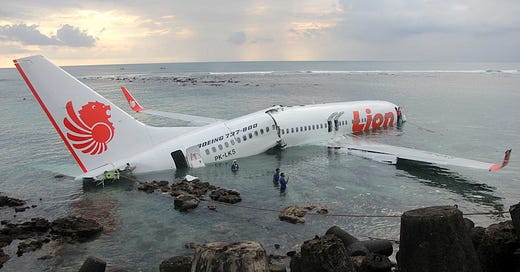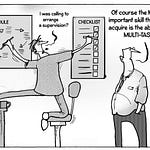“Welcome back to The Kaizen Project, where we break down real-world lessons in project management—both the wins and the failures. Because, let’s be honest, sometimes we learn the most when things go completely off the rails. And we’ll get into it right after the intro!
Today, we’re diving into when projects fail spectacularly. And we’re not talking about small missteps like ordering the wrong color office chairs—we’re talking about high-profile project failure, break down what went wrong, and most importantly, extract the key lessons project managers can take away.
Alright, let’s start with one of the most infamous project failures in modern history—the Boeing 737 MAX crisis.
Now, when we talk about project disasters, we’re usually thinking about blown budgets, missed deadlines, and maybe an embarrassing product launch. But this failure cost lives.
Boeing, one of the most respected names in aviation, known for building some of the most reliable aircraft in history, found itself at the center of a global scandal—one that resulted in 346 deaths, a worldwide grounding of the 737 MAX, billions in financial losses, and a serious hit to Boeing’s reputation.
So how did one of the biggest names in aerospace engineering go from industry darling to damaged brand in a matter of months?
The first major warning sign came on October 29, 2018, when Lion Air Flight 610 crashed into the Java Sea just 13 minutes after takeoff, killing all 189 people on board.
Just five months later, on March 10, 2019, Ethiopian Airlines Flight 302 crashed just six minutes after takeoff, killing all 157 passengers and crew.
Both crashes involved Boeing’s new 737 MAX aircraft, which was supposed to be a more fuel-efficient, technologically advanced version of the classic 737. But what investigators quickly realized was that both planes suffered from the same fatal issue—an automated flight control system called MCAS ( which is an abbreviation for, Maneuvering Characteristics Augmentation System).
MCAS was designed to automatically push the plane’s nose down if it detected that the aircraft was climbing too steeply. The problem with that was that pilots weren’t fully trained on how to override it and the system was triggered by faulty sensor data, causing the planes to nosedive uncontrollably.
Boeing didn’t include MCAS in the pilot training manual—so pilots had no idea what was happening when they lost control.
Both crashes could have been prevented with better risk management, better communication, and more rigorous testing. Instead, Boeing rushed production and cut corners—leading to catastrophic failure.
After the Ethiopian Airlines crash, every major aviation authority worldwide grounded the 737 MAX.
This was a global embarrassment for Boeing. Airlines canceled orders. Boeing’s stock plummeted. The FAA, which had once had a reputation for being too cozy with Boeing, came under fire for failing to catch these issues during certification.
Boeing lost an estimated $20 billion in settlements, legal fees, and compensation to airlines, production of the 737 MAX was halted for over a year, and Airlines sued Boeing for damages due to grounded planes.
And perhaps the most devastating consequence? Boeing’s reputation for safety—built over a century—was now in question. Customers started favoring Airbus. Pilots and airlines distrusted Boeing’s decision-making.
Even when the aircraft was cleared to fly again in late 2020, passenger confidence in the 737 MAX was shattered. Airlines had to rebrand the plane just to get people to book flights on them.
This wasn’t just a project failure—it was an organizational failure.
Boeing, once synonymous with engineering excellence, became a cautionary tale of what happens when cost-cutting and speed take priority over safety and transparency.
And here’s the thing: the warning signs were there. But Boeing ignored them.
So let’s talk about exactly what went wrong.
Boeing rushed development to compete with Airbus, but they didn’t properly address the risks that came with their new automated flight system. Instead of designing a safer, more intuitive system, they prioritized cost-saving and speed over rigorous testing.
From a project manager perspective, Cutting corners on risk management leads to disaster. A proper risk assessment process would have identified the software flaws before the aircraft ever took off.
So, whether you’re leading a 5 billion dollar aerospace project or a new marketing campaign, risks need to be identified, documented, and addressed before they become full-blown crises.
There was also Stakeholder Misalignment & Lack of Transparency.
Boeing didn’t fully disclose the MCAS system changes to pilots or airlines, assuming they wouldn’t need extra training.
When pilots found themselves in life-threatening situations, they weren’t even aware of how the system worked. And worse? Boeing’s internal teams had warned about the potential dangers, but leadership ignored them.
From my perspective as a PM, the keys takeaway from this mistake are, One: Stakeholder communication isn’t optional—it’s essential. Two: If teams don’t know what’s changing, how can they prepare for it? And Ignoring internal warnings is a recipe for failure. A project manager’s job is to align everyone—executives, end users, and your internal team. If your stakeholders aren’t informed, expect chaos.
Problem number 3: Lack of Contingency Planning.
When issues with the 737 MAX started surfacing, Boeing had no real contingency plan.
Instead of immediately grounding the aircraft and investigating the issue transparently, they doubled down, defended the system, and downplayed concerns.
Every project needs a Plan B and If leadership refuses to acknowledge problems, failure is inevitable.
The key takeaway from this flub is that, things will go wrong in any project. What separates a great project manager from a struggling one is how well they’ve prepared for those moments
These lessons and takeaways apply to every industry—not just aviation. Whether you’re managing software development, construction, or a product launch, the core principles remain the same.
At the end of the day, projects don’t fail because of one big, catastrophic mistake. It’s death by a thousand cuts; they fail because of a series of smaller mistakes that go unchecked.
The best project managers aren’t just executors—they’re risk mitigators, communicators, and problem-solvers.
So, before you kick off your next project, ask yourself: Have you identified risks and planned for them, Are your stakeholders fully informed, Do you have a contingency plan in place if things go south?
Because success isn’t just about hitting deadlines—it’s about making sure you’re not cutting corners along the way.
That’s it for today’s episode of The Kaizen Project! If you enjoyed this, make sure to subscribe and share. Until next time, keep learning—not just from successes, but from failures, too.”












Share this post